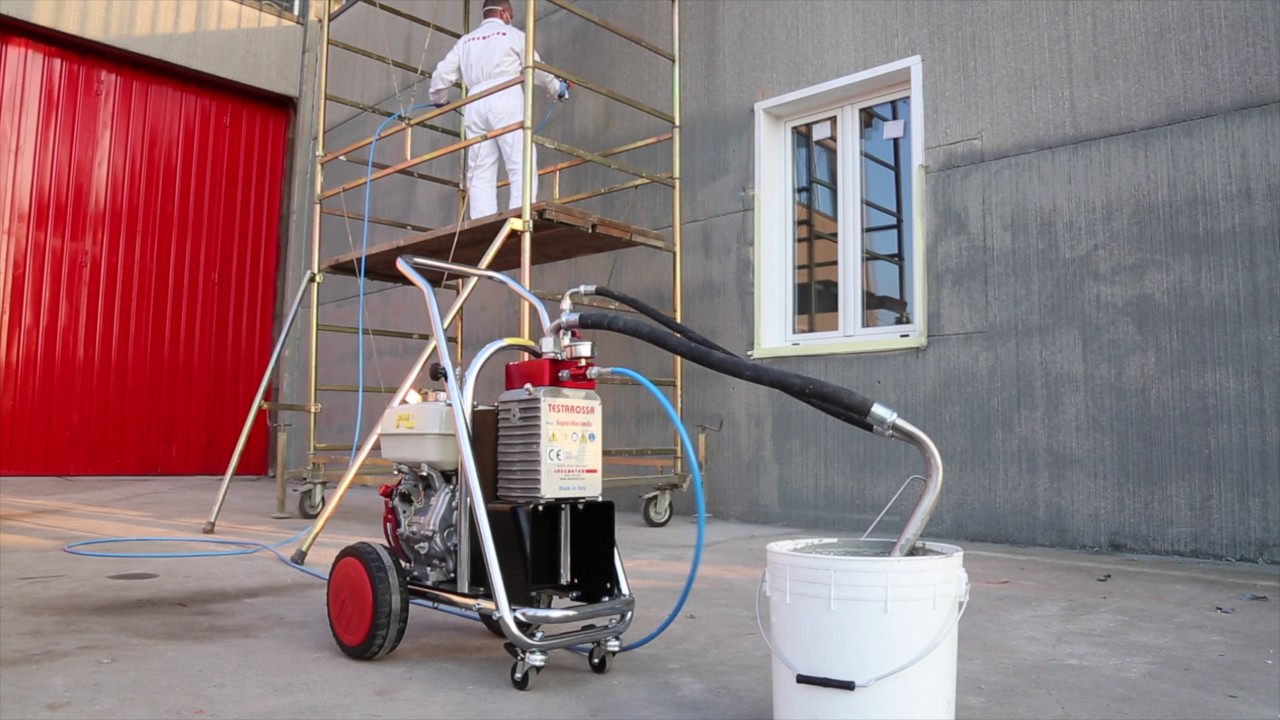If you are a professional painter or a DIY enthusiast looking to take your painting projects to the next level, a commercial paint sprayer is a valuable tool to have in your arsenal. With a commercial paint sprayer, you can apply paint quickly and evenly, ensuring a professional-quality finish every time.
In this article, we will provide a step-by-step guide on how to use a commercial paint sprayer, including tips on how to prepare the sprayer, the surfaces you will be painting, and yourself for the job.
Choose the Right Paint Sprayer for the Job
The first step in using a commercial paint sprayer is to choose the right tool for the job. There are several different types of paint sprayers on the market, each with its own unique features and capabilities. Here are a few key factors to consider when selecting a commercial paint sprayer for your specific use case scenario:
- Type: There are three main types of commercial paint sprayers: airless, HVLP (high-volume, low-pressure), and LVLP (low-volume, low-pressure). Airless paint sprayers use high pressure to atomize the paint, making them ideal for large projects and heavy-duty coatings.
HVLP and LVLP paint sprayers use lower pressure and larger droplets, which makes them better suited for smaller projects and more delicate finishes.
- Size: Commercial paint sprayers are available in a range of sizes, from small handheld units to large, stand-mounted models. Consider the size of the area you will be painting and the amount of paint you will require to cover it when selecting a paint sprayer.
- Features: Look for features like adjustable spray patterns and flow rates, as well as any additional attachments or accessories that may be helpful for your specific project. The more complex the project, the more feature-rich your paint sprayer needs to be.
This will make for the smooth execution of your project with the least amount of hindrances and with optimal results.
Prepare the Paint Sprayer
Once you have chosen the right paint sprayer for the job, it is crucial to properly prepare it before use. To ensure that your commercial paint sprayer functions optimally during the job, do the following:
- Assemble the sprayer: Follow the manufacturer’s instructions to assemble the sprayer according to the specific model you are using. This will typically involve attaching the hose, spray gun, and any other necessary parts.
- Prime the sprayer: Before you begin painting, you will need to prime the sprayer. This involves filling the paint container with the appropriate amount of paint and running the sprayer for a few minutes to ensure that all of the internal parts are properly coated.
- Adjust the settings: Most commercial paint sprayers come equipped with adjustable settings for things like spray pattern, flow rate, and pressure. Take some time to experiment with these settings to find the best configuration for your specific project. Remember, getting the technique and settings right is just as critical as choosing the right paint sprayer.
Prepare the Surface
Before you start painting, it’s essential to properly prepare the surface you will be working on. Preparing and priming the surface is a step that you absolutely cannot skip if you desire smooth and professional results that last a long time.
This is a crucial step to ensure that the paint firmly adheres to the surface and the end results are as even and smooth as possible.
- Clean the surface: The first step in preparing the surface is to thoroughly clean it. This will remove any dirt, dust, or debris that could interfere with the adhesion of the paint. Use a mild detergent and a soft cloth or sponge to wipe down the surface, making sure to pay special attention to any rough or uneven areas.
- Repair any damage: If the surface you are painting has any cracks, holes, or other damage, it’s vital to repair it before applying the paint. Use a putty knife and patching compound to fill in any gaps or holes, and sand the area smooth once it has dried.
- Mask off any areas you do not want to paint: Before you start spraying, it is important to mask off any areas that you do not want to paint. This might include trim, windows, or other fixtures. Use painter’s tape and plastic sheeting to cover these areas, making sure to press down firmly to create a tight seal.
Prepare Yourself for the Job
In addition to preparing the paint sprayer and the surface, preparing yourself for the project is just as important a step. Here are a few things you can do to stay safe and protected during the job:
- Wear protective clothing: When using a commercial paint sprayer, it is essential to wear protective clothing to avoid getting paint on your skin or clothes. This might include a jumpsuit, gloves, and a hat or other head covering.
- Use a respirator: Painting with a commercial paint sprayer can produce a lot of overspray and fumes, so it’s imperative to use a respirator to protect your lungs. Look for a respirator with a high-efficiency particulate air (HEPA) filter, which will help to remove any harmful particles from the air you breathe and prevent the inhalation of toxic fumes.
- Set up a spray booth: If possible, set up a spray booth or other enclosed area to contain the overspray and fumes while you are painting. This will help to keep your workspace clean and reduce the risk of breathing in any harmful particles.
Start Painting
Once you have prepared the paint sprayer, the surface, and yourself, you are all set to start painting! Keep the following pointers in mind as you start painting:
- Hold the sprayer correctly: To get the best results when using a commercial paint sprayer, holding the tool correctly is a must. Hold the sprayer with both hands, keeping your arms extended and your wrists straight. This will help you to maintain control and avoid any accidental drips or overspray.
- Keep the sprayer moving: To create a smooth, even finish, keep the sprayer moving as you paint. Start at one end of the surface and move the sprayer slowly and evenly across the surface, overlapping each pass slightly to avoid any gaps or bare spots.
- Avoid over-applying the paint: It can be tempting to apply multiple coats of paint to achieve a thick, even finish, but this can actually result in drips and runs. Instead, apply a single, even coat of paint and allow it to dry completely before applying a second coat if necessary.
Clean Up
You cannot consider the painting job truly complete unless you have cleaned up your workspace and equipment. Here is a checklist that you can use as reference:
- Clean the sprayer: After you have finished painting, it’s essential to clean the sprayer to prevent any paint from drying and clogging the internal parts. Follow the manufacturer’s instructions for cleaning the specific model of sprayer you are using, and be sure to use the appropriate cleaning solutions and tools to avoid damaging the sprayer.
- Dispose of any leftover paint: Any leftover paint should be properly disposed of according to local regulations. This might involve taking it to a recycling center or hazardous waste facility.
- Clean up the workspace: Finally, be sure to clean up your workspace to remove any paint splatters or overspray. Use a damp cloth or sponge to wipe down surfaces, and vacuum up any dry paint particles.
And that is how to use a commercial paint sprayer to successfully execute a painting project. Follow the above steps to safely and professionally make use of the paint sprayer and get polished results.









